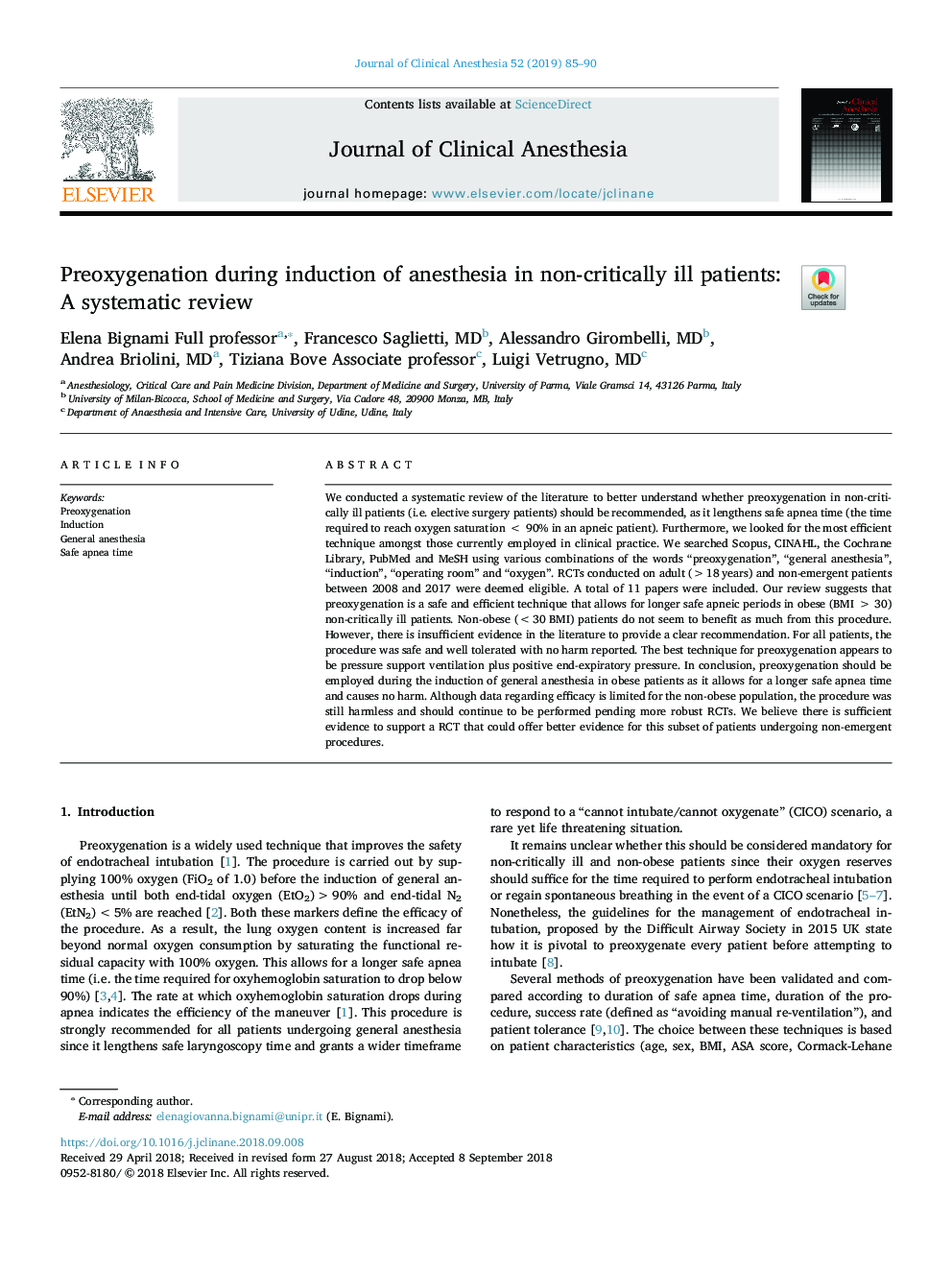| Article ID | Journal | Published Year | Pages | File Type |
|---|---|---|---|---|
| 10137853 | Journal of Clinical Anesthesia | 2019 | 6 Pages |
Abstract
We conducted a systematic review of the literature to better understand whether preoxygenation in non-critically ill patients (i.e. elective surgery patients) should be recommended, as it lengthens safe apnea time (the time required to reach oxygen saturationâ¯<â¯90% in an apneic patient). Furthermore, we looked for the most efficient technique amongst those currently employed in clinical practice. We searched Scopus, CINAHL, the Cochrane Library, PubMed and MeSH using various combinations of the words “preoxygenation”, “general anesthesia”, “induction”, “operating room” and “oxygen”. RCTs conducted on adult (>18â¯years) and non-emergent patients between 2008 and 2017 were deemed eligible. A total of 11 papers were included. Our review suggests that preoxygenation is a safe and efficient technique that allows for longer safe apneic periods in obese (BMIâ¯>â¯30) non-critically ill patients. Non-obese (<30 BMI) patients do not seem to benefit as much from this procedure. However, there is insufficient evidence in the literature to provide a clear recommendation. For all patients, the procedure was safe and well tolerated with no harm reported. The best technique for preoxygenation appears to be pressure support ventilation plus positive end-expiratory pressure. In conclusion, preoxygenation should be employed during the induction of general anesthesia in obese patients as it allows for a longer safe apnea time and causes no harm. Although data regarding efficacy is limited for the non-obese population, the procedure was still harmless and should continue to be performed pending more robust RCTs. We believe there is sufficient evidence to support a RCT that could offer better evidence for this subset of patients undergoing non-emergent procedures.
Related Topics
Health Sciences
Medicine and Dentistry
Anesthesiology and Pain Medicine
Authors
Elena (Full professor), Francesco MD, Alessandro MD, Andrea MD, Tiziana (Associate professor), Luigi MD,
